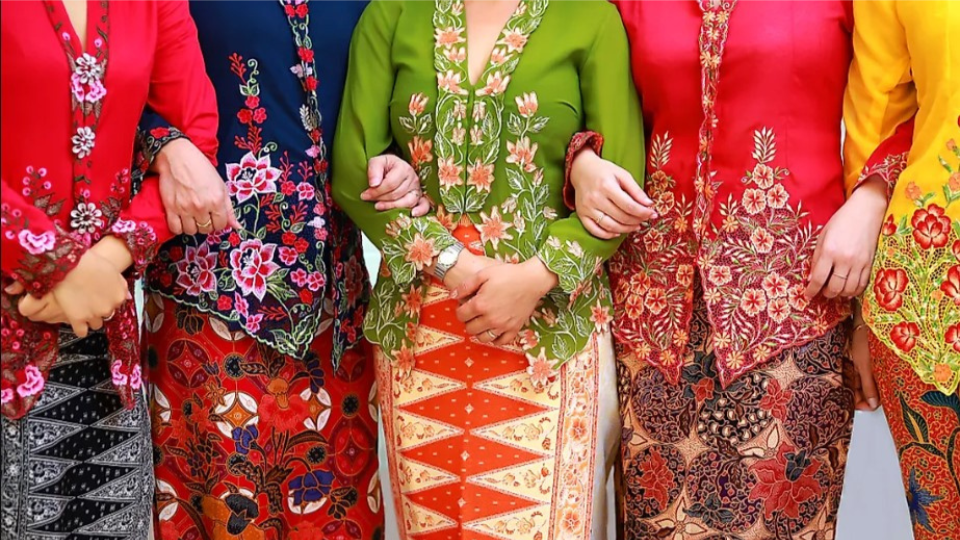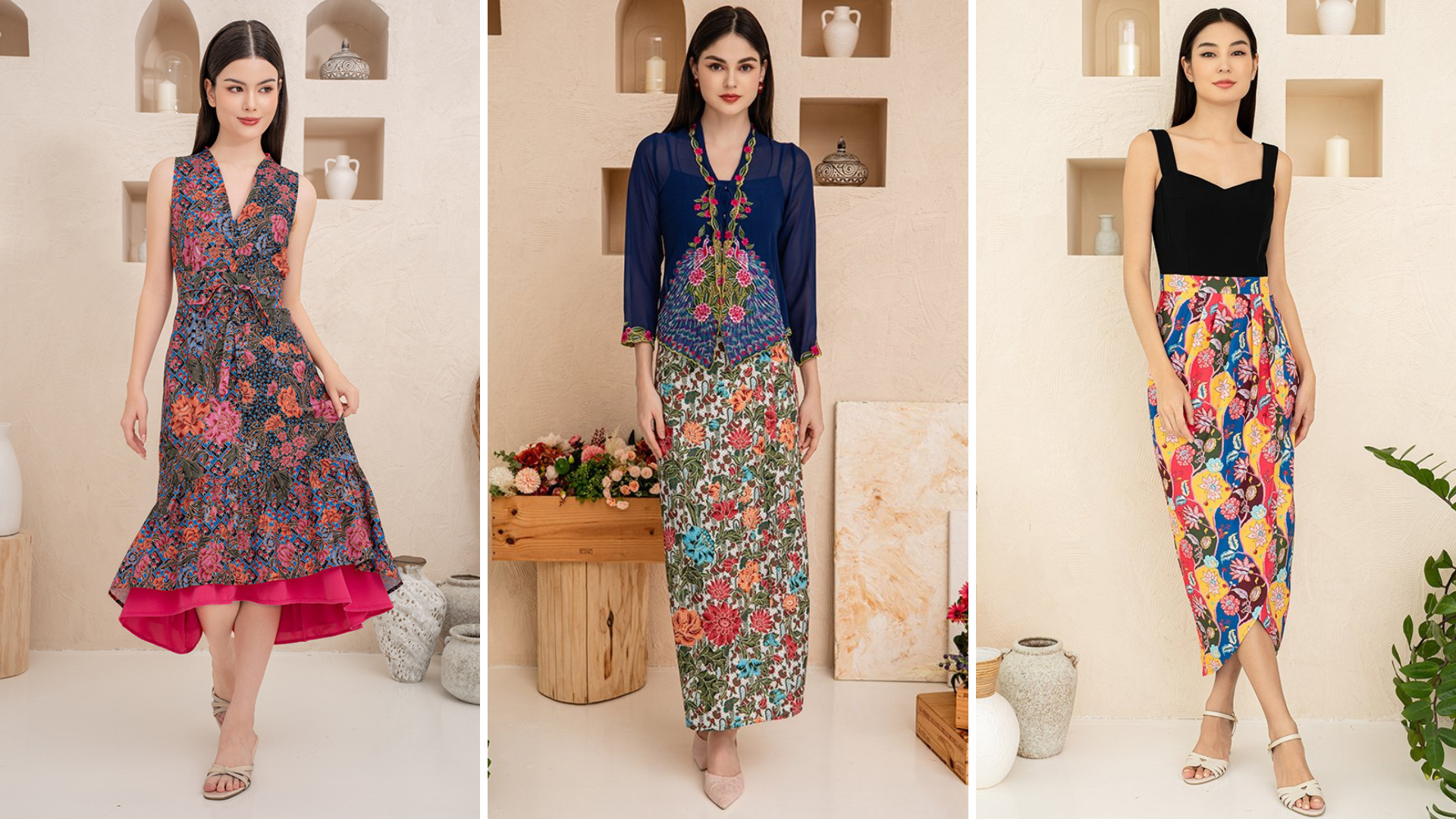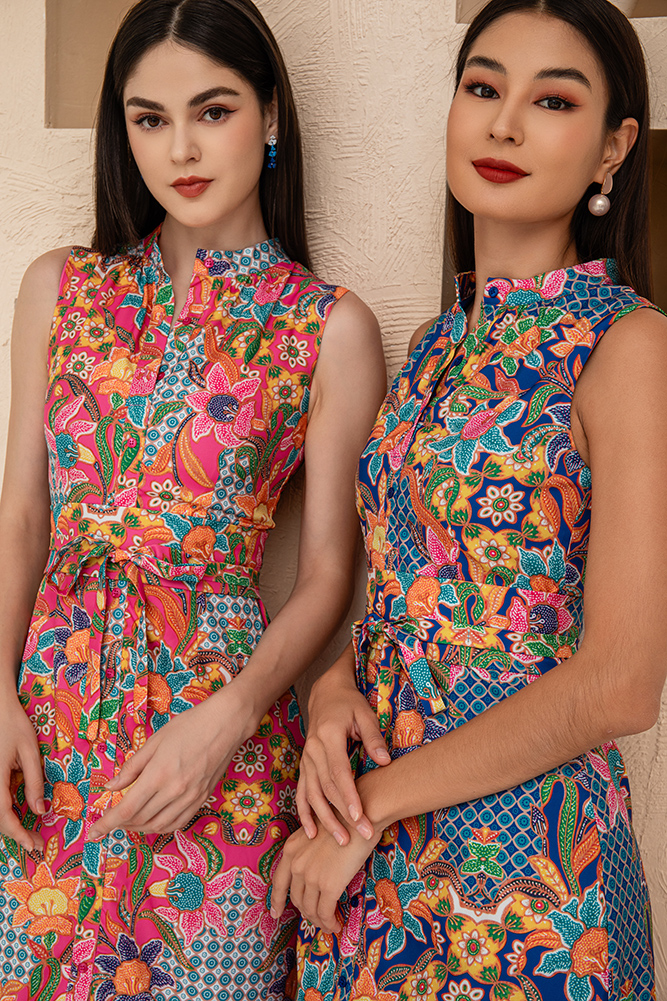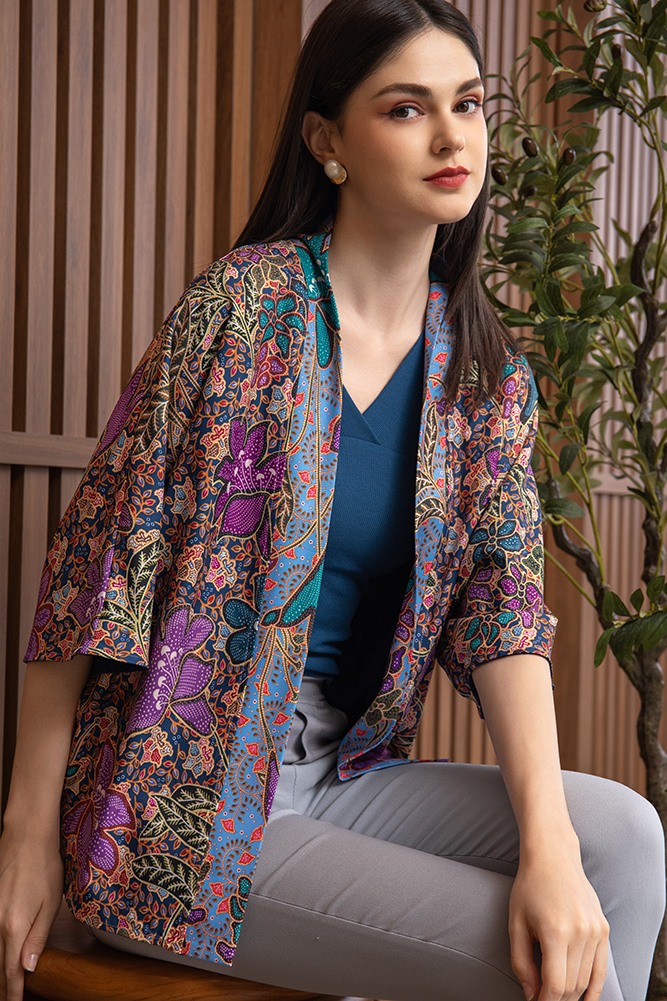Batik: The Timeless Art That is Reshaping Fashion Trends

What is Batik?
Batik is a method of dyeing fabric using wax to create patterns and designs. The word "batik" comes from the Javanese term tik, which means "to dot," reflecting the dotting technique central to the process. Batik is more than just a fabric—it is a cultural artifact, a symbol of identity, and a method of storytelling.


Example of different batik design styles in Southeast Asia
In Singapore, batik is traditionally worn by the Malay and Peranakan communities, often in the form of sarongs to pair with kebaya blouses and other ceremonial attire. While it has deep roots in traditional wear, batik has evolved to become part of contemporary fashion, celebrated not only for its visual appeal but also for its cultural significance. Today, batik is incorporated into everything from formal outfits to casual wear to make it accessible to a wider audience.

The incorporation of batik sarong in Nyonya Peranakan Fashion
Where Did Batik Originate From?
Batik is believed to have originated in Indonesia, specifically in Java, where it became a central part of cultural and artistic expression. Historically, batik was used to denote social status, with certain patterns reserved for royalty and other designs for specific ceremonies, such as weddings or religious rituals.
Over time, batik spread throughout Southeast Asia, including Malaysia, Thailand, and Singapore, with each country developing its own style and interpretation of the craft. While Indonesian batik remains the most widely recognised, the art has evolved in different regions to reflect local customs and aesthetics.
In Singapore, batik holds a unique place, both as a nod to the country’s multicultural heritage and as a fashion statement that blends tradition with modernity.
How is Batik Fabric Made?
Batik is created using a wax-resist dyeing technique, which involves multiple steps to achieve its characteristic look:
- Designing the Pattern: The first step in making batik is to draw the design on fabric. Artists often use stencils or freehand methods to outline the intricate motifs, which can range from floral and animal patterns to geometric shapes. Each design is intentional, with many motifs carrying specific cultural or symbolic meanings.
- Applying the Wax: Once the design is finalized, hot wax is carefully applied to the outlined areas using a tool called a canting for fine details or a stamp known as a cap for larger patterns. The wax prevents the fabric from absorbing the dye in those areas, creating a contrast once the dye is applied.
- Dyeing the Fabric: The fabric is then dipped in dye, usually starting with the lightest colour. After the first round of dyeing, the wax is either removed or left in place, and new layers of wax are applied to different areas for the next round of dyeing. This process can be repeated multiple times to achieve multi-coloured patterns.
- Removing the Wax: Once the dyeing is complete, the fabric is boiled or soaked in hot water to remove the wax and reveal the intricate batik patterns. The final result is a piece of cloth with unique, handcrafted designs that reflect the artistry of the maker.

The process of hand-painting the fabric with wax

The process of dyeing the fabric
This meticulous process can take anywhere from days to weeks, depending on the complexity of the design and the number of colours involved. The labour-intensive nature of batik-making is one of the reasons why each piece is often considered a work of art.
Batik’s Resurgence in Modern Fashion
In recent years, there has been a growing movement to bring traditional crafts back into mainstream fashion, and batik has become a key player in this trend. From high-end runways to street style, batik has transcended its origins to become a versatile element in modern wardrobes. What makes batik particularly appealing to contemporary designers and fashion enthusiasts is its uniqueness and intricate design.
Many fashion designers and clothing brands including Faire Belle are exploring ways to incorporate batik into modern silhouettes, with everything from dresses and blouses to accessories featuring batik prints. This blend of cultural craftsmanship and contemporary aesthetics creates a powerful statement which allows the wearers to express both individuality and a connection to tradition.
Why Batik Clothing Remains Timeless?
What gives batik its timeless appeal is not just its beauty, but the stories it carries within its patterns. Each motif is more than just a design; it is a symbol of culture, history, and identity. As batik continues to evolve, it bridges the gap between generations, offering a connection to the past while staying relevant to the future.
The Future of Batik in Singapore Fashion
As we look to the future, batik is set to play an even bigger role in the global fashion scene. Its intricate designs, cultural significance, and eco-friendly nature resonate with today’s fashion-conscious consumers who value both style and sustainability. In Singapore, the renewed interest in batik reflects the collective effort to preserve cultural heritage while embracing modern trends.
At Faire Belle, we celebrate this timeless craft by offering a wide range of batik apparel designed for the modern woman. From chic & modern batik dresses and stylish batik tops to versatile cardigans, sarongs, skirts, and pants, our collection lets you incorporate the beauty of batik into everyday wear.
Browse our batik collection today to find the perfect pieces for your next special occasion.



